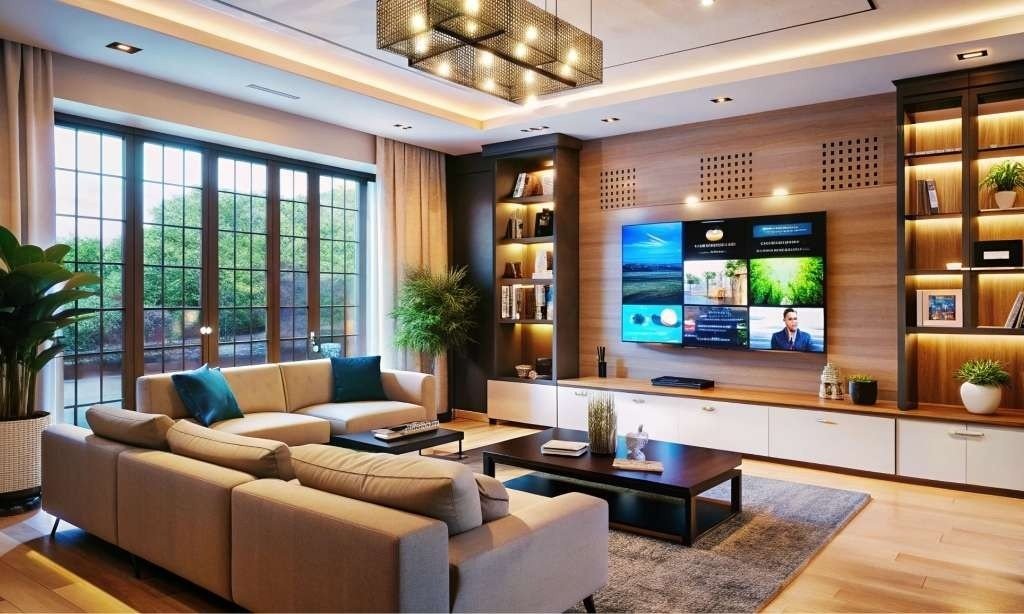Arranging a small living room can feel challenging, especially when you want it to look stylish, feel spacious, and still serve all its functions. But with smart planning, the right furniture choices, and a bit of creativity, you can transform even the tiniest living area into a cozy, inviting, and functional space. A professional interior designer in Mangalore can help you make the most of your space by combining comfort, utility, and design in clever ways.
Here’s a guide to arranging your small living room for maximum impact and comfort.
1. Measure and Plan the Layout
Before bringing in furniture or décor, take accurate measurements of your living room—length, width, and height. Note the position of doors, windows, and built-in elements like shelves or alcoves. This helps you understand the usable space.
Once you know your room’s dimensions, sketch a layout. Identify where the main furniture pieces (like the sofa and TV unit) will go. Try different arrangements on paper before committing. An expert interior designer often uses software or layout templates, but you can start with simple paper planning or free online tools.
2. Choose the Right Furniture Size
In small living rooms, the scale of furniture is very important. Avoid bulky sofas or oversized chairs that eat up floor space. Instead, go for:
-
Compact sofas or loveseats
-
Armless chairs or poufs
-
Nesting tables or folding tables
-
Slim-profile TV units or floating shelves
Multipurpose furniture, like a storage ottoman or a coffee table with drawers, adds extra function without taking up more room.
3. Float Furniture Instead of Pushing Everything to the Wall
Many people assume pushing all furniture against the walls makes a room feel bigger, but that’s not always the case. Instead, “floating” furniture slightly away from the wall can actually define zones within the space and create better flow.
Try placing the sofa across from the TV unit with a small rug in between. This setup defines the seating area clearly and makes the space feel thoughtfully arranged.
4. Use Vertical Space Smartly
When floor space is limited, think vertically. Install tall bookshelves, vertical cabinets, or wall-mounted storage units to keep things organized without crowding the floor.
You can also use floating shelves to display books, photos, or décor items. These shelves keep items off the ground and draw the eye upward, making the room feel taller.
5. Keep Walkways Clear
In small spaces, it’s essential to maintain clear walkways. Avoid placing furniture where it will block natural paths or make the room feel tight.
Allow at least 18–24 inches of space between seating and coffee tables, and keep 2–3 feet wide walkways where people can comfortably pass through.
6. Use Light Colors and Natural Light
Light colors help open up a small space. Use shades of white, beige, pastels, or light greys on walls, curtains, and furniture to make the room feel airy and bright.
Let in as much natural light as possible by using sheer curtains or blinds instead of heavy drapes. A well-lit room naturally feels larger and more welcoming.
Mirrors are another great trick—they reflect light and give the illusion of more space. Place a large mirror on one wall, preferably opposite a window.
7. Add Area Rugs to Define Zones
An area rug not only adds style and warmth but also helps define the seating zone in a small room. It anchors the furniture and visually separates the space, especially in open-plan homes.
Make sure the rug is large enough for at least the front legs of the sofa and chairs to sit on it. A rug that’s too small can make the room look even smaller.
8. Use a Minimalist Approach
Keep your living room clutter-free by limiting the number of decorative items. A few well-chosen pieces like a statement painting, a few indoor plants, or one centerpiece can make your space feel curated without overcrowding.
Minimalist design not only looks modern but also helps the room breathe, making it feel larger and more open.
9. Incorporate Built-In Storage
When space is tight, built-in storage is a smart solution. Think of built-in TV units with shelves, window seats with hidden storage, or wall-mounted cabinets.
These elements are custom-fitted to your space, helping you store essentials neatly while freeing up the floor area. A seasoned interior designer will know how to integrate such features without making the room feel boxy.
10. Focus on Function First
Design your living room around how you actually use it. If it’s a space mainly for watching TV, ensure the seating is oriented accordingly. If it’s for conversation, try a more open, circular layout.
Flexible furniture that can be moved easily is great for rooms that serve multiple purposes—like a living room that also functions as a study or play area.
Final Thoughts
Arranging a small living room takes thoughtful planning and a few smart design choices. By using the right-sized furniture, keeping things light and open, and organizing vertically, you can make even the smallest space feel comfortable and beautiful.
If you’re unsure how to bring it all together, getting advice from a skilled interior designer in Mangalore can make the process easier and more effective. They understand local spaces, modern design trends, and the best space-saving solutions. With the finishing touches done by experienced interior decorators in Mangalore, your small living room can become the most stylish and functional space in your home.





